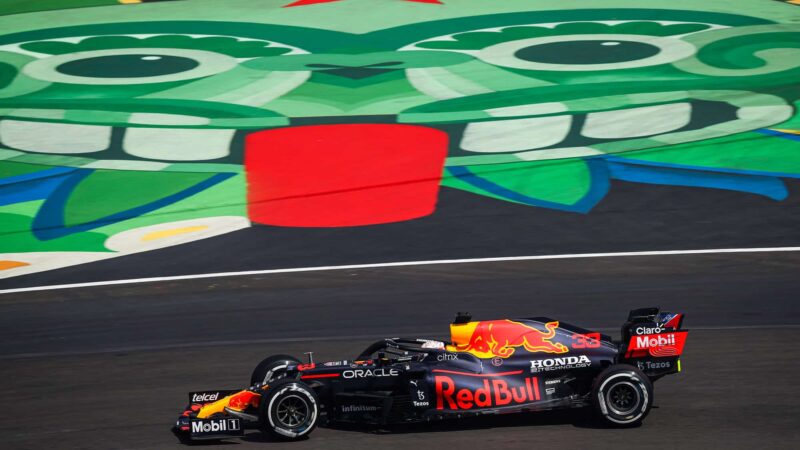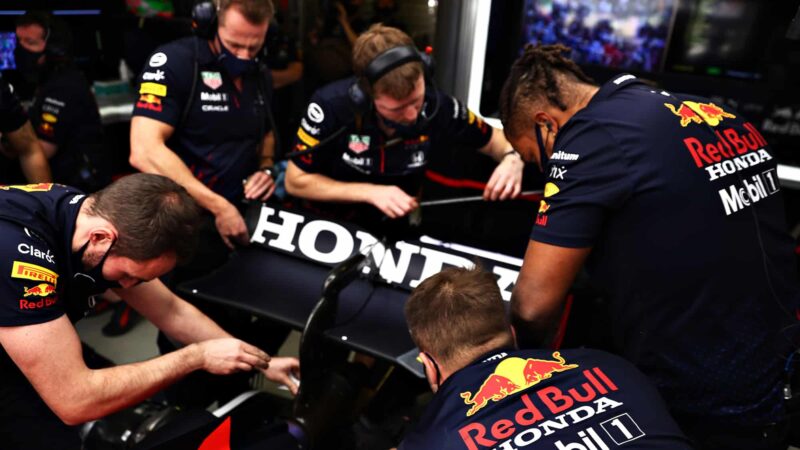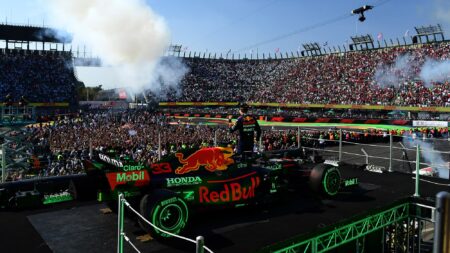Red Bull was, by its later reckoning, 0.8sec off its potential pace in qualifying because of how it was ambushed by the increase in track temperatures. Meantime, Mercedes found around 0.3sec from the track temperature increase. Up until then the problem was in getting the front tyres up to temperature by the start of the flying lap without overheating the rears. The hotter track made this much easier for them – or for Valtteri Bottas at least. He drove a brilliant pole lap, which Hamilton couldn’t quite match.
But in hindsight the Mercedes front row lock-out represented a serious under-performance from Red Bull and Mercedes extracting the maximum from what it had. “We just didn’t nail it in qualifying,” said Verstappen. “We lost a lot of pace and just weren’t making the tyres work and it all started falling away from us. When there’s so little grip, everything you do to the tyre can make a massive difference.” Mercedes simply capitalised.
Two Against One
Mexico normality resumed on race day as the Red Bull tyre prep issues had been understood. It was no longer about finding the delicate sweet spot of temperature balance between front and rear over a single lap, but about keeping the tyres from running too hot – which is largely a function of downforce and balance.
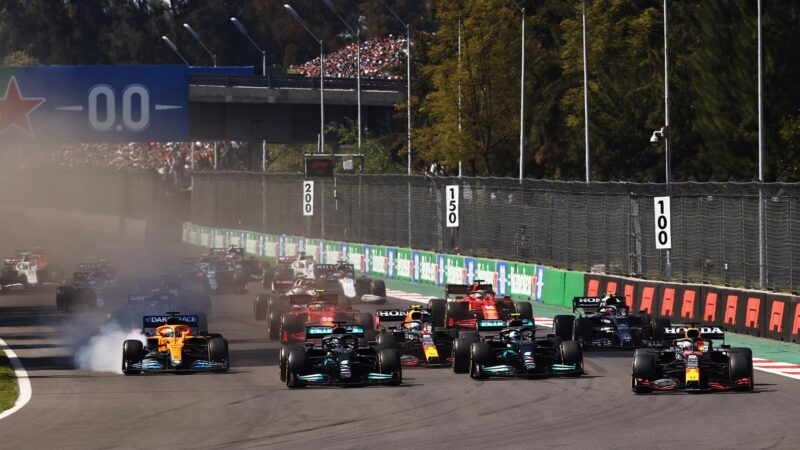
Verstappen took advantage of a gap on the outside at the start, but locking-up Ricciardo found himself running out of room
Mark Thompson/Getty Images
But in addition to the Red Bull reverting to being the faster car, Verstappen instantly got track position by winning the start with that brilliantly committed move under braking into Turn 1, using the rubbered-in racing line to stand on the left pedal about 20 metres later than either of the Mercedes guys. He’d got a nice slipstream from them and second-guessed which way Bottas was about to move. Bottas had been slow off the line, Hamilton getting ahead and blocking the right-hand side, but Bottas not doing the same to the left – which is exactly where Verstappen wanted to be.
As if fastest car and instant track position wasn’t enough for Red Bull, Mercedes then effectively lost Bottas from the game as he was hit into a spin by the locked-up McLaren of Daniel Ricciardo. That made the strategic game for Red Bull very simple, with two cars against Hamilton: Verstappen pulling away out front, way out of undercut range, Sergio Perez ready to apply the undercut pressure, forcing Hamilton in early and letting Verstappen have the ideal stint lengths.
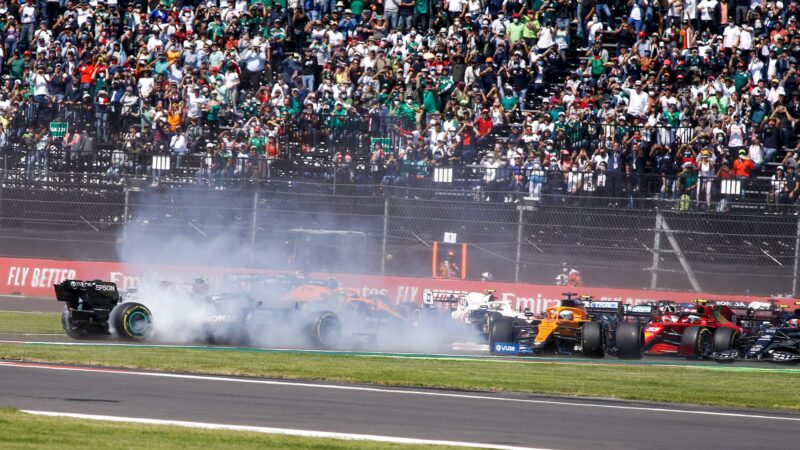
From pole to pirouette in one corner
DPPI
That’s how it played – Hamilton coming in on lap 29 with his rear tyres absolutely finished, Perez then staying out for another 11 laps and delighting his countrymen by leading the race when Verstappen pitted on lap 33. Verstappen was able to cruise to his tyre temperatures with a building lead over Hamilton who even on the hard tyres everyone used for the second stint was suffering way more thermal deg than the Red Bull. Perez on his much newer tyres started the second stint 9.5sec behind but was able to get onto Hamilton’s tail with 10 laps still to go. “You know they are faster when Perez is closing you down,” said Hamilton later.
But getting past was a different matter. The problem here is that you can only tow close behind another car for a lap or so before everything – tyres, brakes, power unit – begins to overheat. Furthermore, there is way less drag reduction than normal when you hit the DRS button, because of that thinner air. Hamilton used backmarkers to help, placing them in between him and his pursuer at strategic places. Perez got close at Turn 4 on the final lap, but not close enough. Verstappen by this time was only a couple of corners away from meeting that man with the chequer.
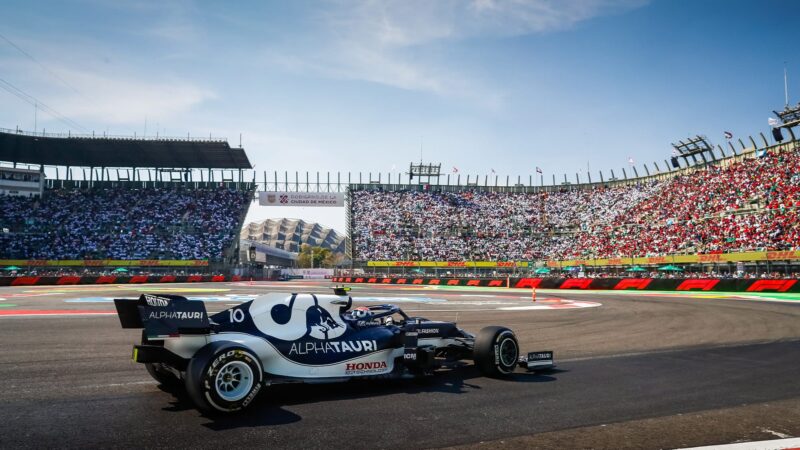
Ferrari had to challenge to the AlphaTauri of Gasly
Antonin Vincent / DPPI
Bottas stole the point for fastest lap, though it entailed an extra two stops, one for the soft tyres and another to get him out of Verstappen’s way. Max – who had the fastest lap so far and wanted to retain the point that goes with it – had initially let the Mercedes by, then caught up to it again, asking for blue flags… Gamesmanship and niggle.
Almost a lap behind, the AlphaTauri of Pierre Gasly was best of the rest, a pristine drive from fifth on the grid and clear of the two Ferraris the whole way.
